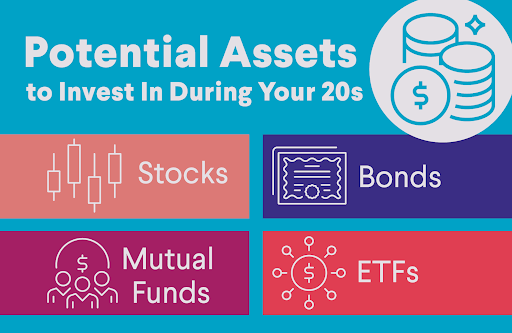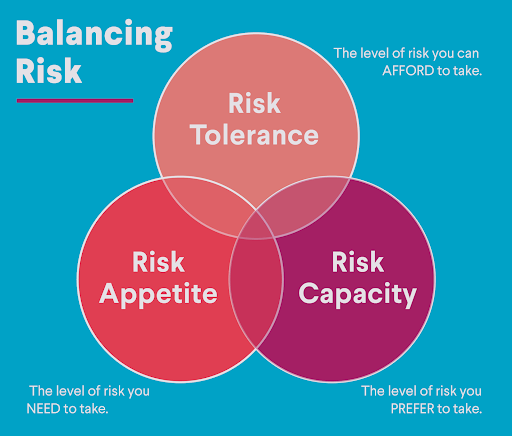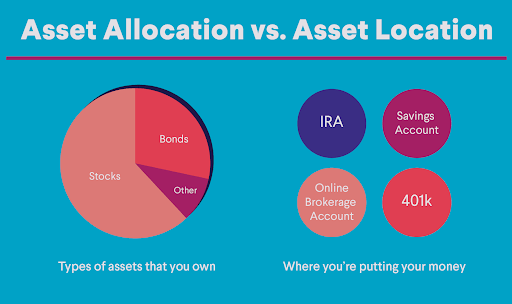Guide To Accepting a Job Offer via Email
You made it through the interview process and have an official job offer via email. But how do you accept an offer letter? Say yes right away, or take time to think it over? Should you talk to your new employer on the phone even if you received the offer by email?
Before you commit, you’ll want to make sure you take the right steps. Here’s a guide to help you navigate the process once that job offer appears in your inbox.
How To Accept a Job Offer
It’s important to know how to reply to your new employer in order to show them you’re a professional and reinforce their choice in hiring you. Accepting the job offer with clear, respectful communication helps make a good impression and establish a positive rapport from the beginning.
Whether or not the employer offers you the job by email or phone, the first thing to know is you don’t have to give a definitive answer right away. Employers realize a new hire may need time to mull it over. It’s perfectly okay to reply with, “Thank you for the offer. I really appreciate it. May I take the next day or two to think it over before I respond?” This is important, particularly if you want to prepare to discuss salary, bonuses, your title, or other company benefits such as health or employer-sponsored life insurance.
Unless it’s urgent for the employer to fill the position ASAP, they will most likely be fine with granting you two or three days to make your final decision. Try not to take too long, though. It’s best to stay within a 48-hour timeframe so you don’t leave them hanging.
Recommended: Average U.S. Salary By State
Check your score with SoFi
Track your credit score for free. Sign up and get $10.*
Evaluate the Job Offer
If you’re taking a couple of days to give your final answer, you’ll want to truly assess if this position is right for you. First, and probably most important, is evaluating the salary offer. Is what they’re paying enough for you to live on, or are you going to need a side hustle or a second job to make ends meet?
Another factor to consider is whether the offered income is commensurate with the job’s duties, responsibilities, and your experience. Researching similar positions in the industry can give you an idea if the company is offering competitive pay.
You’ll also want to make sure you’re satisfied with the benefits package, work hours, and vacation and sick time policies. Is the employer offering any other perks that may seal the deal, such as college tuition assistance or an employer match on your 401(k) contribution?
Other factors you may want to evaluate include the work culture and environment. For example, if you tend to be someone who works alone and the company loves hosting afterwork happy hours or frequent team-building workshops, it might not be the best fit for you.
Lastly, think about your career trajectory and how this job might help move you forward. If it provides challenges, allows you to learn, and offers room for advancement, it may be a clear cut answer, especially if it’s your first job or you’re changing careers.
Questions To Ask the Employer Before Accepting a New Job
Before accepting an offer letter, make sure you get answers upfront to any questions you may have. During the time you’re evaluating your options, gather your thoughts and make a list of what you want to know. These queries can eliminate any doubts you might have, provide answers to questions you may not have asked during the interview, and prepare you for what to expect on your start date.
Asking important questions also clarifies what your role is, the company’s expectations of you, and in turn, what your expectations of the employer should be.
Some questions you may want to ask:
• Is the salary negotiable?
• When will I be eligible to receive benefits?
• What types of employee savings plans are offered?
• What types of pre-employment background checks or screening does the company do?
• To whom will I be reporting to?
• What should I expect from the onboarding process?
• What type of training will I receive?
• What is the company policy regarding remote or hybrid work?
• Will I be expected to work late or on the weekends?
• Does this position offer bonuses or commissions?
• What’s the workplace dress code?
Negotiate the Job Offer
Seeing if there’s any wiggle room with certain aspects of the job is important before you make your official decision. For example, if the job doesn’t require you to be onsite every day, you might ask if you can work a hybrid schedule. Or perhaps there’s a possibility of a flexible schedule where you choose the 8-hour shift you want to work.
Although it can feel awkward and uncomfortable to bring it up, many employers actually expect potential new hires to bring up the salary subject. In fact, according to a poll by CareerBuilder, 73% of employers in the U.S. anticipate a salary negotiation upon the initial job offer. And bringing it up can literally pay off. A study by Fidelity Investments found 87% of young professionals aged 25 to 35 who negotiated their salary got at least some of what they asked.
(If you find yourself more interested in maximizing your income and managing your finances, a free budget app can help you get started.)
Talking to your new boss about salary before signing on may be the only time you’re in the driver’s seat in salary negotiations. Take advantage of this moment and the fact the employer wants you. Asking for more money, even if it’s for an entry-level salary, demonstrates you’re a confident, business-savvy professional who knows their worth.
If you want to negotiate the salary after you get the job offer, do your homework. Find out what salaries competitors are offering for someone with your skill set and experience, on such sites as Payscale.com, Glassdoor.com, or Salary.com. Set the bar high initially and ask for the top of your range, knowing you’ll probably end up somewhere in the middle between what you want and the maximum the employer is willing to offer. Be prepared to give reasons as to why you should earn more, touting your experience, accomplishments, and the value you’ll bring to the company.
In the event you don’t get your desired salary, see if you can negotiate for other things that might make up for it, such as a signing bonus or employee stock options.
Accept the Job Offer Over the Phone
A phone call is a common way employers let the applicant know they’ve landed the job. When that call comes, you’ll want to be prepared to know exactly what to say.
If you’re offered the job by phone, first thank the caller, confirm you’re interested, and express your gratitude for the opportunity to fill the position. This gesture helps to establish a good relationship and lets the supervisor know you’re enthusiastic. A reply can be as simple as, “Thank you for extending this offer. I’m delighted and am excited by the opportunity to work with you and the company.”
At this time, you’ll want to ask the employer to send you the written offer letter or contract detailing the conditions of employment, salary information, job duties, and benefits. Once you get it, review it carefully to make sure the terms are acceptable, determine what you might want to negotiate, and look for any small details in fine print that may not have come up during the interview process.
Follow Up With an Email
The process for accepting a job through email closely follows the same protocol as by phone.
In an email, you’ll want to open with a thank you for considering you for the position and say you’re excited about the prospect of joining the team. Here’s the opening to request time to think about the offer, letting them know you have some questions, and inquiring when it may be possible to discuss them. The person will then set up a time to talk on the phone or by video chat, or might ask you to send your questions along in an email.
You should also ask for the written offer here too, if it is not included in the email. If you’re recently out of school, your offer letter can serve as proof of income for student loan repayment plans and apartment applications.
Who Should You Email To Accept a Job Offer?
The person who officially offers you the job is the one to whom you should directly respond. At this point it will most likely come from the hiring manager or your future boss. Regardless, reply to the person sending the email. If there are cc’s, be sure to hit reply all to include those parties.
What To Include in a Job Offer Acceptance Letter
A job acceptance letter gives you the chance to document key points about your new job and clarify the terms of employment. Getting it in writing helps prevent future misunderstandings.
Your acceptance letter should include the following:
• Thank you to the employer for offering you the position, stating the full job title.
• A formal acceptance of the job offer.
• Confirm the terms and conditions of employment: starting salary, health benefits, work hours, and start date.
• Close by showing appreciation for the opportunity and your eagerness to join the company.
Advice on Writing a Job Offer Acceptance Letter
Don’t quickly jot off and send a job acceptance letter. Instead, carefully plan out what you want to say. Make sure it’s well-written, strikes a professional and polite tone, and covers all of the important bases. Be sure to proofread carefully for spelling and grammar errors before sending.
When composing the acceptance via email, create a concise subject line such as:
• Acceptance of [Job Title] job offer – [Your name]
• [Your Name] – [Job Title] job offer acceptance
Here are some sample templates to help you craft your response:
Job Offer Acceptance Letter Sample #1
Dear Ms. Jones,
Thank you for offering me the position of Account Executive with XYZ company. It is with great enthusiasm that I accept the job offer and look forward to starting employment with your company on [Month, Date, Year].
As we discussed, my starting salary will be $50,000 and health insurance benefits will be provided after 60 days of employment.
Please don’t hesitate to reach out at any time if there’s anything more you need from me.
Thank you again for giving me this wonderful opportunity. I am eager to join the team and make a positive contribution to the organization.organization.
Sincerely,
Your signature
Typed name
Job Offer Acceptance Letter Sample #2
Dear Ms. Jones,
I am writing to confirm my acceptance of your job offer on [Date job was offered] and to let you know how delighted I am to be joining the XYZ company as an Account Executive. I believe I can make a valuable contribution to the company, and I am very grateful for the opportunity you have given me.
As discussed, my starting salary is $50,000 with the full range of benefits granted to your employees. My scheduled work hours are from 9:00am to 5:00pm, Monday through Friday. I will report to work on [Start date].
Thank you for the confidence you have expressed in me. I look forward to a long and productive career with XYZ company.
Sincerely,
Your signature
Typed name
Job Offer Acceptance Letter Sample #3
Dear Ms. Jones,
I was very excited to get your call and receive the job offer for the Account Executive position at XYZ company.
After reviewing the offer, I had a few questions I wanted to run by you — particularly about the base salary and the company’s benefits package. Would it be possible to arrange a phone call to discuss?
Thank you in advance for your help with this. I look forward to speaking to you again soon.
Sincerely,
Your signature
Typed name
What to Expect When Accepting a Job Offer
Once you and your new employer have hashed out any negotiated terms in your offer letter, ask them if anything else is needed from you prior to your first day. If you’re employed elsewhere, inform your current boss you’re leaving and set your termination date (typically two weeks after you give notice). You’ll also want to determine if you have the option of utilizing COBRA to stay on your current employer’s health insurance plan if your new employer’s health benefits don’t kick in right away. And look into how to roll over your 401(k) to the new employer’s plan if you wish to do so.
Your new workplace may require certain things before you start, including filling out paperwork and submitting documentation for your HR file, plus drug testing or a background check. There may be an orientation, training classes you’ll need to attend when you start, and an employee handbook to study.
Recommended: What is The Difference Between TransUnion and Equifax?
The Takeaway
Whether you’re offered a job by phone or email, it’s important to respond in a timely, professional manner, especially if you decide to take the position. But you don’t have to say yes immediately. It’s acceptable to ask the employer if you can have a couple of days to think about it before you can make a final decision. Depending on what the company is offering benefits- and salary-wise, you may want to come to the negotiating table with the employer to see how to maximize your situation.
SoFi helps you keep track of your money, all in one place. With our money tracker app, you can set budgets, categorize your spending, spot upcoming bills, and monitor your credit score, all for free. You’ll get updates on your progress and be able to set financial goals. You can even talk one-on-one with a financial planner.
Take control of your finances with SoFi. With our financial insights and credit score monitoring tools, you can view all of your accounts in one convenient dashboard. From there, you can see your various balances, spending breakdowns, and credit score. Plus you can easily set up budgets and discover valuable financial insights — all at no cost.
See exactly how your money comes and goes at a glance.
FAQ
What do you say when you accept a job offer?
Thank the employer, let them know you appreciate the offer, and communicate you’re excited about joining their company. Responding in an upbeat, positive way shows your enthusiasm and signals to the employer they made the right choice.
How do I accept an informal job offer?
You can accept the job offer over the phone or by email but follow the employer’s lead. If they call you, it’s best to respond in kind and accept it over the phone. In the case of an emailed job offer, you can send your response that way. Most likely, even if they offer you the job over email, the employer will follow up to solidify things verbally.
How do you say yes to a job offer?
Once you’ve sorted out any questions with the employer and completed any negotiations, ask for the offer in writing if you haven’t already received an offer letter. Read over the offer letter carefully to ensure all of the details are correct. If everything is in order, you can send the email confirming your salary, your job title, start date, and any other agreed-upon conditions. Be sure to thank them again and express again how much you’re looking forward to joining the team.
Photo credit: iStock/Tempura
SoFi Relay offers users the ability to connect both SoFi accounts and external accounts using Plaid, Inc.’s service. When you use the service to connect an account, you authorize SoFi to obtain account information from any external accounts as set forth in SoFi’s Terms of Use. Based on your consent SoFi will also automatically provide some financial data received from the credit bureau for your visibility, without the need of you connecting additional accounts. SoFi assumes no responsibility for the timeliness, accuracy, deletion, non-delivery or failure to store any user data, loss of user data, communications, or personalization settings. You shall confirm the accuracy of Plaid data through sources independent of SoFi. The credit score is a VantageScore® based on TransUnion® (the “Processing Agent”) data.
*Terms and conditions apply. This offer is only available to new SoFi users without existing SoFi accounts. It is non-transferable. One offer per person. To receive the rewards points offer, you must successfully complete setting up Credit Score Monitoring. Rewards points may only be redeemed towards active SoFi accounts, such as your SoFi Checking or Savings account, subject to program terms that may be found here: SoFi Member Rewards Terms and Conditions. SoFi reserves the right to modify or discontinue this offer at any time without notice.
Non affiliation: SoFi isn’t affiliated with any of the companies highlighted in this article.
Third-Party Brand Mentions: No brands, products, or companies mentioned are affiliated with SoFi, nor do they endorse or sponsor this article. Third-party trademarks referenced herein are property of their respective owners.
This article is not intended to be legal advice. Please consult an attorney for advice.
Financial Tips & Strategies: The tips provided on this website are of a general nature and do not take into account your specific objectives, financial situation, and needs. You should always consider their appropriateness given your own circumstances.
SORL-Q324-045









